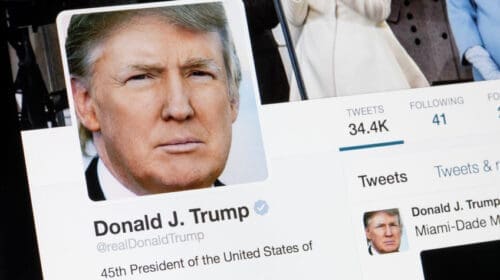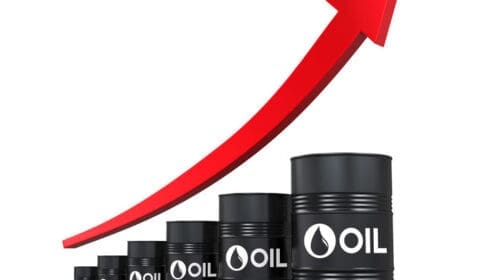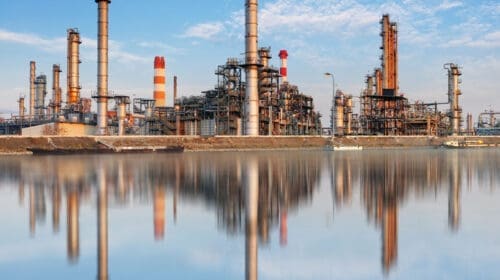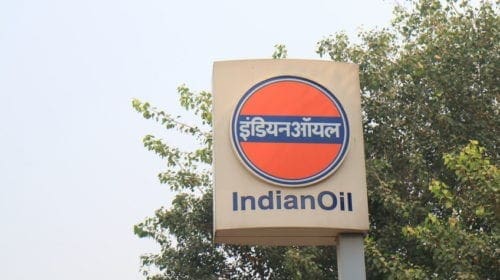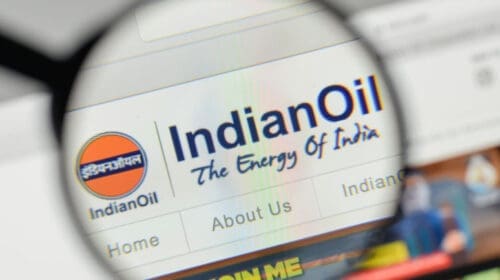In an effort to reduce its dependence on crude imports from Middle Eastern countries led by Saudi Arabia, India is considering diversification of its crude sources, adding the United States in its long list of crude suppliers.
Currently, India imports about 82 % of crude oil for its domestic requirement. According to latest IEA reports, at present, India imports around 3.78 million of crude oil barrels per day and produces 897,300 barrels.Importantly, the bulk of the crude–around 62%–is coming from Saudi Arabia and other middle eastern countries like Iran, Iraq and Kuwait.
Since the United States shale oil revolution, global oil business has witnessed a lot of changes. Even the International Energy Agency (IEA) has predicted that the United States will overtake Saudi Arabia and Russia to become the world’s biggest oil producer by 2020. However, some called it as a rosy prediction.
Nevertheless, decreasing crude prices and OPEC’s decision to cut productions has brought the Asia continent in focus and helped India to emerge as the demand center for petroleum products. Saudi Arabia’s policy of premium pricing and Iran’s entry into the world market have also added different dimensions to the global crude market.
With all these developments coupled with political instability in Middle Eastern region, United States and Australia grew as new energy suppliers to India. During recent months, two major state-owned oil refiners, including the country’s largest refiner, Indian Oil Corporation Limited (IOCL) and Bharat Petroleum Corp. Ltd (BPCL), signed deals with the United States for American crude. A third refiner, Hindustan Petroleum Corp Ltd (HPCL), also plans to buy U.S. crude oil in coming months for its 166,000-bpd refinery in southern India.
Reports suggest that IOCL bought the country’s first shale oil from the United States. The first shipment of American crude oil worth $100 million is expected to reach India next month. As the first cargo was loaded on ships on August 7, it is believed that cargo would after a 40-day journey reach Paradip refinery in Odisha State in Eastern India sometime around September 20.
IOCL had in July sealed a deal to import 1.6 million barrels of Mars crude from the US for delivery at its Paradip refinery. IOCL had also sealed a deal to import 400,000 barrels of Western Canadian Select.
On August 09, 2017, IOCL received the federal government nod to buy one very large ship full of crude oil from the US every month this year. The Indian shipping ministry has also allowed the IOCL to import one parcel or cargo of crude oil from the US every month in foreign ships.
It is important to note here that at present, the Indian federal government allows the import of crude oil from foreign countries only on Indian carriers. As per the policy, Indian shipping lines get the first right of refusal by virtue of their being allowed to match any lowest bidder for the transportation of crude oil. Only when they waive their rights can the oil firms use a foreign line. Transporting US crude needs very large crude carriers (VLCCs) as a VLCC is capable of transporting up to 2 million barrels of oil.
Recently,Bharat Petroleum Corp. Ltd (BPCL) has bought two of the US cargoes. Reports suggest that BPCL bought 1 million barrels of US WTI Midland sweet crude for delivery in October, its first purchase of the sweet variety from the US. In July, it bought 500,000 barrels each of Mars and Poseidon varieties of medium-to-high-sulphur crude for delivery to its Kochi refinery between 26 September and 15 October.
With these developments, India, which is currently the world’s third-largest oil importer, joins the club of Asian countries like South Korea, Japan and China to buy US crude because OPEC’s decision to cut production drove up prices of Middle East heavy-sour crude.
The shipment of crude oil to India comes nearly two years after then US president Barack Obama lifted the 40-year-old ban on oil exports. During their maiden meeting on June 26, 2017, Indian Prime Minister Narendra Modi and US President Donald Trump agreed to deepen the engagement in the energy sector.
IOC Director (Finance) A K Sharma recently told media persons in New Delhi that buying US crude has become attractive for Indian refiners after the differential between Brent and Dubai has narrowed.
It may be recalled here that Brent is the benchmark crude that serves as a reference price for buyers in the Western world while Dubai serves as a benchmark for countries in the eastern world.
Middle Eastern Countries – Earlier crude suppliers to India
During the past several decades, Saudi Arabia, Iran, Iraq and Kuwait were the major crude suppliers for India, whereas Qatar was the most preferred gas supplier, accounting for 61% of total LNG shipment to India, followed by Nigeria (14.7%). Eleven other countries shared the remaining supply. However, new destinations like Australia and the United States are fast emerging as viable alternative options.
A recent dispute between India and Iran over the development of the offshore Farzad-B gas field in the Persian Gulf has been seen as a major step that forced Indian oil refiners to reduce imports from Tehran.
IOCL and Mangalore Refinery and Petrochemicals Ltd (MRPL), which were the largest buyers of Iranian crude, had reduced imports of about 1 million tonnes each from the previous year imports.
Bharat Petroleum Corp Ltd (BPCL) and Hindustan Petroleum Corp Ltd (HPCL) also decided to reduce oil imports from Iran by 0.5 million metric tonnes each to 1.5 million tonnes.
Latest available data provided by Director General of Hydrocarbon (DGH), suggests that total crude oil production in India during the 2015-2016 financial year was 36.95 million metric tonnes, whereas cumulative natural gas production was 32.249 billion cubic metres.
Analysts are of the view that as the current domestic production is not enough to meet the rising energy demands, so import is the only options,. However, price factor is also important, so India decided to diversify its crude source from Middle Eastern countries to the United States and other available options.
India – a rising gas market
Experts say since the domestic gas output has been declining for years, the dependence on imported LNG has to increase. The economy in India is expanding and industries and households are increasing their consumption of natural gas.
Platts says that India’s domestic gas production is set to rise to 37 Bcm by 2021 and consumption to hit 72 Bcm over the same period. Additional gas demand will have to be met by rising LNG imports. Currently India imports almost 36% of its gas requirements.
India looks for gas imports from the United States, Australia and other options including African countries. Analysts say that shale gas imports from the US is expected to be a cost-effective fuel source for fertilizer and power producers in India. Market observers also sees rise in American gas as they believe that the US gas to India would not exceed $6 per million metric British thermal unit.
India is also negotiating with Japan to hire very large container carriers (VLCC) for the transport of large volumes of gas as it looks at diversifying its energy mix.
India already maintains long-term gas supply contracts with Australia and Russia and is now looking for cooperation with African countries such as Mozambique.
India born Tara Malhotra is a senior freelance energy writer with experience of more than two decades. He has worked for many international Oil, Gas and Energy publications. He holds a bachelor degree in Science and Post Graduate Diploma in Journalism and Mass Communication. He has also worked as a news photographer for many international publications. Currently, he lives and works in Sydney, Australia.




